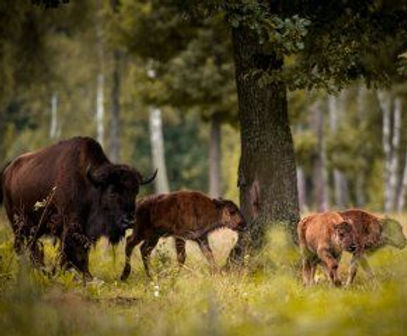
Białowieża Forest
The Białowieża Forest, which is also the oldest forest in the European continent, is located between the border of the countries of Poland and Belarus. In the part of Poland, the Bialowieski National Park serves as a reserve that protects the wildlife of the region. This zone is especially located in the Podlaskie Voivodeship, in the eastern and northern parts of the country, in the Mazuro-Podlasie region.
Climate
The climate of the region is temperate, as most of the zones in Europe, which means that the summers can be mild or warm, while the winters can go from cool to cold. Also, the rainfall season is distributed over the whole year. Still, during the past years, due to climate change, the summers have become warmer, and not only in the forest, but in different parts of the European continent, meaning that the winter season used to be colder, and the summer seasons milder. This has, unfortunately, already affected the lives of some living beings, like different plants and even birds, which is a very worrying and concerning topic.
Fauna

European Bison/ Zubr Europejski
The European Bison can be found in the forest of Bialowieza, as this is his natural habitat. It is the greatest terrestrial mammal that inhabits Europe since males can weigh almost 900 kg, while females 600 kg. The diet of these species is to a very large extent, as they are herbivorous and can eat grasses, herbaceous vegetation, leaves, and especially bark of trees and shrubs. The body of the bison is full of soft and large fur that helps them to survive during the colds.
Still, the life of these species has been very harsh since they were primarily extinct from the Bialowieza Forest, after the First World War, because of the causes of deforestation of the habitat, as well as poaching. After this, several rescued species of bison that were born and raised in zoos were introduced back to their original habitat, and in this way, the current population of the animals returned and remains in the forest. However, the threat of the bison is present, so it is crucial to keep protecting and creating new local populations of the species.

Gray Wolf
The wolf lives in the forest, but for many decades was a threat since humans were the greatest danger for these species. Nevertheless, this animal is one of the most important for the forest ecosystem because they are known for being the depredators of the region, that keep and maintain a balance in the habitat. For this reason, the Gray Wolf's diet is mostly based on deers, roe deers, and wild boars, as also occasionally smaller animals like foxes,
hares, and raccoon dogs. It has large legs, and a large, fluffy tail, in addition to small ears and very gray fur, besides they can weigh from 35-70 kg, and finally, live until 16 years.
Moreover, the cruel and harsh hunting was stopped when in 1998, the wolf in Poland began to be protected, but the species are still rare in some of the regions. Nowadays, in the forest, there are over 30 species of wolves, while in the rest of Poland there are 2000, which is alarming.

Eurasian Lynx
The Eurasian lynx is the third biggest mammal predator of the fauna that lives in Poland. Still, in contrast with the wolf, for example, this cat mostly has a lonely lifestyle, surely, not taking into account the period of reproduction and the lifestyle of the females. As carnivorous, their diet is mostly based on deers and roe deers, and in their case, the smaller species of the fauna are very rare. As they are lonely animals, they spend most of the time hunting young samples of deers during the night, and each of them lives and hunts in an individual territory.
The lynx in Poland has been protected since 1995, but their biggest threat is that these animals need very large forest areas since they are territorial animals, so for this reason, deforestation has been an issue for keeping the lonely lifestyle of the lynx.

Deer
Deers are crucial in the forest since they are the principal source of food of the predators, such as the wolf and the lynx. As herbivores, they consume vegetation, shoots, and bark, and they can weigh 10 kg, or even reach 13 kg. For this reason, they are one of the most vulnerable ones in the habitat, not only because of the predators mentioned previously but also for the humans. However, their biggest threat, as well as for the other animals of the area, is the deforestation and lack of protection of some areas of the forest since only 17% of the Bialowieza forest is properly protected in the country.
